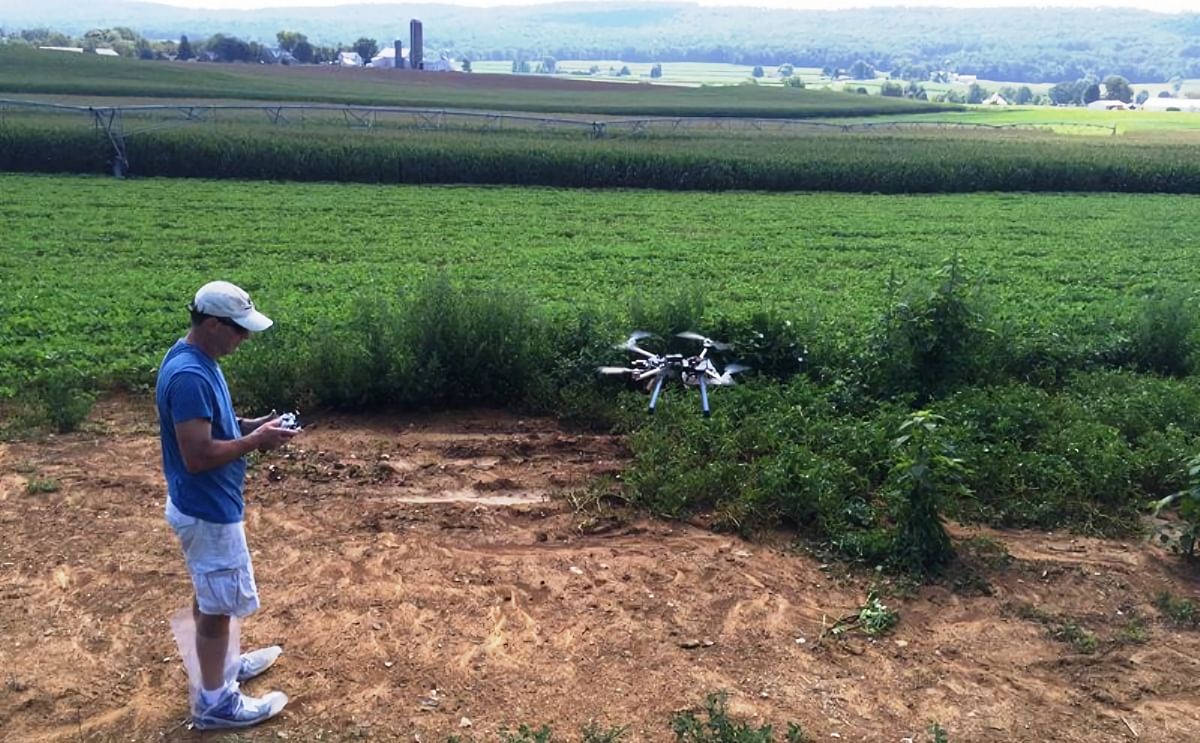Drones to examine spuds from the sky in agricultural revolution.
Agricultural tech revolution: Eyes in sky precise for potatoes.

Recently, drones have been given what might just be their most important ever role: being deployed to protect Scottish potatoes. Scientists are increasingly looking at how the technology, developed for the military and corporate interests, could be used to save crops and livestock.
Researchers at Scotland’s Rural College (SRUC) are focusing on how the humble spud, one of the nation’s stable foods, can be watched from the sky as global heating looms.
At the Royal Highland Show this month, the SRUC’s Simon Gibson-Poole will talk about how drones can be used to spot diseased potato plants.
At the Royal Highland Show this month, the SRUC’s Simon Gibson-Poole will talk about how drones can be used to spot diseased potato plants.
Simon Gibson-Poole:
“Drones have been in the mainstream news for all the wrong reasons, with flights from Gatwick and Heathrow being delayed due to people flying drones over runways. However, drones can be used positively and specifically to aid agriculture and the environment.”
“Out of the box, these drones can help speed up field walking due to the bird’s eye view they bring – reducing crop impact in the process; be used to inspect farm infrastructure, such as roofs and silos, that is difficult to get to; help identify the location of field drains; and even to round up livestock or scare geese off by attaching sirens to the drones.”
Mr Gibson-Poole is one of several drone experts to speak at the show, which runs from June 20 to 23. It is not just farmers who are embracing drone technology.
Climate scientists are eager to get into the air to see what effects global warming is having on the landscape. Police Scotland earlier this year confirmed it would use two drones to help hunt for missing persons in the Highlands.
Humza Yousaf, Justice Secretary:
“This state-of-the-art new equipment will help Police Scotland keep communities safe, enhancing their search capabilities for vulnerable people, particularly over wide and challenging terrain.”







